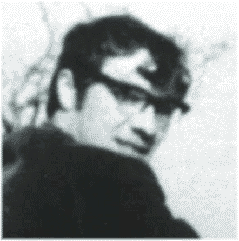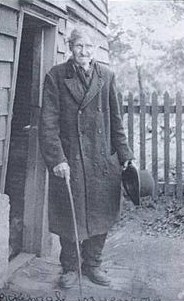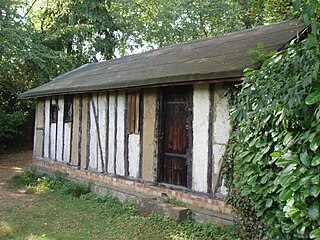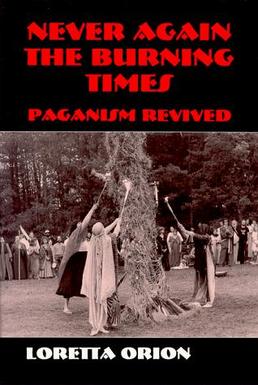The Charge of the Goddess is an inspirational text often used in the neopagan religion of Wicca. The Charge of the Goddess is recited during most rituals in which the Wiccan priest/priestess is expected to represent, and/or embody, the Goddess within the sacred circle, and is often spoken by the High Priest/Priestess after the ritual of Drawing Down the Moon.

Gardnerian Wicca, or Gardnerian witchcraft, is a tradition in the neopagan religion of Wicca, whose members can trace initiatory descent from Gerald Gardner. The tradition is itself named after Gardner (1884–1964), a British civil servant and amateur scholar of magic. The term "Gardnerian" was probably coined by the founder of Cochranian Witchcraft, Robert Cochrane in the 1950s or 60s, who himself left that tradition to found his own.

Wicca, also known as "The Craft", is a modern pagan, syncretic, earth-centered religion. Considered a new religious movement by scholars of religion, the path evolved from Western esotericism, developed in England during the first half of the 20th century, and was introduced to the public in 1954 by Gerald Gardner, a retired British civil servant. Wicca draws upon ancient pagan and 20th-century hermetic motifs for theological and ritual purposes. Doreen Valiente joined Gardner in the 1950s, further building Wicca's liturgical tradition of beliefs, principles, and practices, disseminated through published books as well as secret written and oral teachings passed along to initiates.

A Book of Shadows is a book containing religious text and instructions for magical rituals found within the Neopagan religion of Wicca. Since its conception, it has made its way into many pagan practices and paths. The most famous Book of Shadows was created by the pioneering Wiccan Gerald Gardner sometime in the late 1940s or early 1950s, and which he utilised first in his Bricket Wood coven and then in other covens which he founded in following decades. The Book of Shadows is also used by other Wiccan traditions, such as Alexandrian Wicca and Mohsianism, and with the rise of books teaching people how to begin following non-initiatory Wicca in the 1970s onward, the idea of the Book of Shadows was then further propagated amongst solitary practitioners unconnected to earlier, initiatory traditions.

Doreen Edith Dominy Valiente was an English Wiccan who was responsible for writing much of the early religious liturgy within the tradition of Gardnerian Wicca. An author and poet, she also published five books dealing with Wicca and related esoteric subjects.
Aidan A. Kelly is an American academic, poet and influential figure in the Neopagan religion of Wicca. Having developed his own branch of the faith, the New Reformed Orthodox Order of the Golden Dawn, during the 1960s, he was also initiated into other traditions, including Gardnerianism and Feri, in subsequent decades. Alongside this, he was also an important figure in the creation of the Covenant of the Goddess, an organisation designed to protect the civil rights of members of the Wiccan community in the United States. He has also published academic work studying the early development of Gardnerian Wiccan liturgy, primarily through his controversial 1991 book Crafting the Art of Magic.

Robert Cochrane, who was born as Roy Bowers, was an English occultist who founded the tradition of Witchcraft known as The Clan of Tubal Cain.
The history of Wicca documents the rise of the Neopagan religion of Wicca and related witchcraft-based Neopagan religions. Wicca originated in the early 20th century, when it developed amongst secretive covens in England who were basing their religious beliefs and practices upon what they read of the historical witch-cult in the works of such writers as Margaret Murray. It was subsequently founded in the 1950s by Gardner, who claimed to have been initiated into the Craft – as Wicca is often known – by the New Forest coven in 1939. Gardner's form of Wicca, the Gardnerian tradition, was spread by both him and his followers like the High Priestesses Doreen Valiente, Patricia Crowther and Eleanor Bone into other parts of the British Isles, and also into other, predominantly English-speaking, countries across the world. In the 1960s, new figures arose in Britain who popularized their own forms of the religion, including Robert Cochrane, Sybil Leek and Alex Sanders, and organizations began to be formed to propagate it, such as the Witchcraft Research Association. It was during this decade that the faith was transported to the United States, where it was further adapted into new traditions such as Feri, 1734 and Dianic Wicca in the ensuing decades, and where organizations such as the Covenant of the Goddess were formed.

Wiccan views of divinity are generally theistic, and revolve around a Goddess and a Horned God, thereby being generally dualistic. In traditional Wicca, as expressed in the writings of Gerald Gardner and Doreen Valiente, the emphasis is on the theme of divine gender polarity, and the God and Goddess are regarded as equal and opposite divine cosmic forces. In some newer forms of Wicca, such as feminist or Dianic Wicca, the Goddess is given primacy or even exclusivity. In some forms of traditional witchcraft that share a similar duotheistic theology, the Horned God is given precedence over the Goddess.

In the neopagan religion of Wicca a range of magical tools are used in ritual practice. Each of these tools has different uses and associations and are commonly used at an altar, inside a magic circle.

George Pickingill was an English farm labourer who lived and worked in the village of Canewdon in the eastern English county of Essex. Widely considered to be a cunning man, or vocational folk magician, he reportedly employed magical means to offer cures for ailments and to locate lost property, although was also alleged to have threatened to place curses on people.

Neopagan witchcraft, sometimes referred to as The Craft, is an umbrella term for some neo-pagan traditions that include the practice of magic. These traditions began in the mid-20th century, and many were influenced by the witch-cult hypothesis; a now-rejected theory that persecuted witches in Europe had actually been followers of a surviving pagan religion. The largest and most influential of these movements was Wicca. Some other groups and movements describe themselves as "Traditional Witchcraft" to distinguish themselves from Wicca.

The Bricket Wood coven, or Hertfordshire coven is a coven of Gardnerian witches founded in the 1940s by Gerald Gardner. It is notable for being the first coven in the Gardnerian line, though having its supposed origins in the pre-Gardnerian New Forest coven. The coven formed after Gardner bought a plot at the Fiveacres Country Club, a naturist club in the village of Bricket Wood, Hertfordshire, southern England, and met within the club's grounds. It played a significant part in the history of the neopagan religion of Wicca.

Raymond Howard was an English practitioner of the modern Pagan new religious movement of Wicca. He promoted his tradition, known as the Coven of Atho, through a correspondence course established in the early part of the 1960s.
The Witchcraft Research Association was a British organisation formed in 1964 in an attempt to unite and study the various claims that had emerged of surviving remnants of the so-called Witch-Cult, such as those of Gerald Gardner, Robert Cochrane, Sybil Leek, Charles Cardell, and Raymond Howard.
In Modern English, the term Wicca refers to Wicca, the religion of contemporary Pagan witchcraft. It is used within the Pagan community under competing definitions. One refers to the entirety of the Pagan Witchcraft movement, while the other refers explicitly to traditions included in what is now called British Traditional Wicca.

Enchanted Feminism: The Reclaiming Witches of San Francisco is an anthropological study of the Reclaiming Wiccan community of San Francisco. It was written by the Scandinavian theologian Jone Salomonsen of the California State University, Northridge and first published in 2002 by the Routledge.

Never Again the Burning Times: Paganism Revisited is an anthropological study of the Wiccan and wider Pagan community in the United States. It was written by the American anthropologist Loretta Orion and published by Waveland Press in 1995.

Evan John Jones (1936–2003) was an English traditional witch, occultist and writer who operated within the tradition of Cochrane's Craft.

Michael Howard (1948–2015) was an English practitioner of Luciferian witchcraft and a prolific author on esoteric topics. From 1976 until his death he was the editor of The Cauldron magazine.















